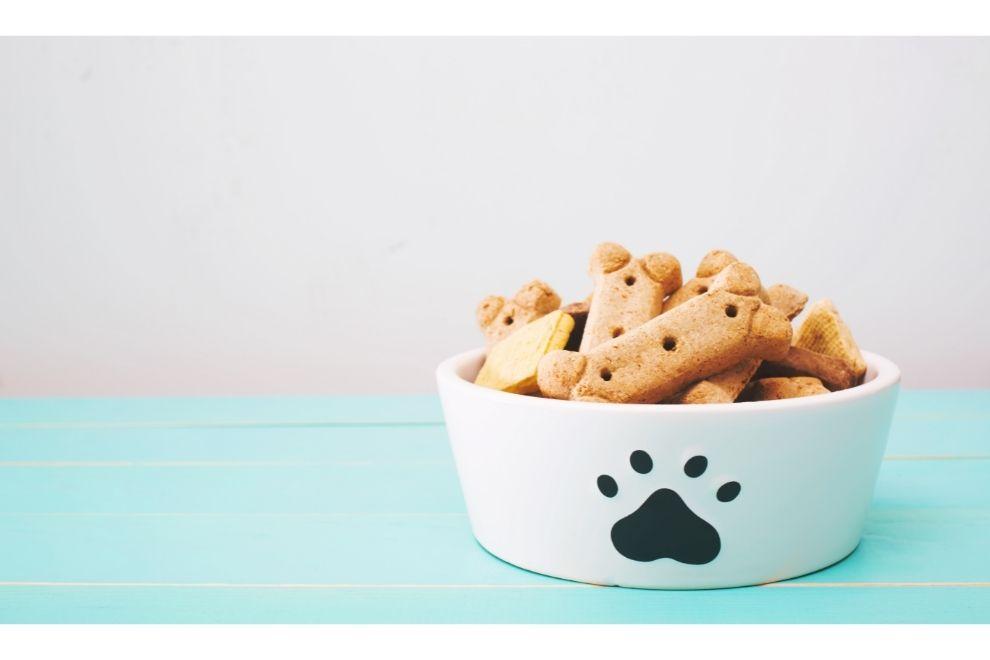
Dog treats, what you need to know.
There are many reasons why we give our dogs treats. We might toss one or two at them when they respond to training, when they’re on their best behavior, or just because of their cute looks. Whatever the reason, you’ll find that your pet immediately gets into a jolly mood after chewing on its treat. They simply love them. When it comes to dog snacks, owners have to know a thing or two about them to know which to give their dog and why, as there are several types of several types of dog treats.
Types of dog treats
They come in a fairly wide variety. Let’s go through them to see which fits both you and your dog’s needs.
Crunchy treats
These are hard and crunchy and come in different flavours, shapes, and sizes. They have a very low percentage of moisture with most being between 10 and 20 per cent. As they're crunchy they can take a while to eat. Coming in different sizes, you have the luxury of choosing that which best suits the size of your dog. They are great for rewards after training, so make sure your pooch has earned it before releasing it.
Soft treats
These have a higher moisture composition than crunchy treats with many of them having up to 20 per cent moisture composition. They also come in a wide assortment of flavours, shapes, and sizes, and make excellent training rewards because of their soft, chewy texture.
Freezer-dried treats
When made properly, these can give a very similar taste to human food and are often quite appetizing to dogs. Unlike the chewy type that contains additives, freezer-dried dog snacks are much healthier being 100 per cent protein. They are mostly dehydrated meat, but fruits and vegetables like pumpkin, apples, and sweet potatoes can also be made into dehydrated treats. Click here to learn more about the benefits of dehydrated dog treats.
Dental or long-lasting chews
These take time to be consumed just like dog-bones. In fact, because of the incredible amount of time dogs chew on them, experts believe they are great for canine dental care. They are made from digestible materials and contain no preservatives, making them very safe.
However, make sure they aren’t too hard so your pet doesn’t sustain any dental injuries. One way to be sure is banging it on your knee. If it hurts, then it is too hard and you might want to choose a different one.
Animal parts
You would think these would be a healthier and more appetizing for dogs, but it isn’t the case. Animal parts, like raw hide and pig skin, are known to contain fat and high calories that can lead to weight gain and gastrointestinal problems.
These animals hides are often treated with chemicals that could cause health issues for dogs. Raw hides also pose choking hazards as they have severe digestibility issues. Pigs ears have also been found to contain harmful bacteria, like salmonella, which can cause diarrhea, stooling, vomiting, and pains.
Bones and hooves are other animal parts that are often given to dogs. Generally, they are never recommended as they cause more harm than good. Because they are very hard, they may cause teeth to break or chip around the edges. Aside from the dental damage they can cause to your dog's teeth, they are also capable of causing gastrointestinal problems and bowel blockage. A better alternative to these are dental chews which are hard, but safer.
Human food
Human food can be good or bad depending on what you give to your pet. Generally, owners are advised to avoid giving the following foods to their dog: cheese, crackers, hot dogs, grapes and raisins, chocolates, onions as the majority of them are dangerous or toxic. Human food which is safe for dogs to eat includes, but is not limited to: lean meat, carrots, apples, and fresh seafood. Visit https://www.healthline.com/nutrition/7-foods-fatal-to-dogs to find out more about human foods that are harmful to dogs.
Reasons for giving dog treats
1. For training
Treats help immensely when training dogs. The idea is psychological because dogs pick up on the fact that if they get certain behaviors and commands right, a tantalizing treat WILL be earned. When they establish this fact, they are more likely to repeat those behaviours to get more delicious treats.
2. To keep pets pre-occupied
When you’re busy with work around the house and want to stop your pet from distracting you, treats can work wonders. Long-lasting chews that take a long while to consume and will keep your dog's paws and mouth busy long enough for you to get your work done.
3. For mental stimulation
Having a dog is lovely, however, having an intelligent dog is the real deal. Intelligent dogs are easier to train and control, the latter being especially important in public places. With treats, you can motivate your pet to participate in mental games and puzzles that boost mental growth and alertness.
4. For dental care:
As mentioned earlier, dental or long-lasting treats help in dental care. When dogs chew on them for extended periods, they get rid of plague and tartar that build up on their teeth.
Conclusion
Treats are great for dogs when they are the right ones. When you're shopping for treats, you should take note of the following:
- Ingredient list - the fewer the better
- Natural preservatives
- Quality seals like that of the Association of Feed Control Officials and similar government-approved institutions
- Sweeteners- ensure they are natural sweeteners.
On a final note, when it comes to dog snacks, quality is everything!








